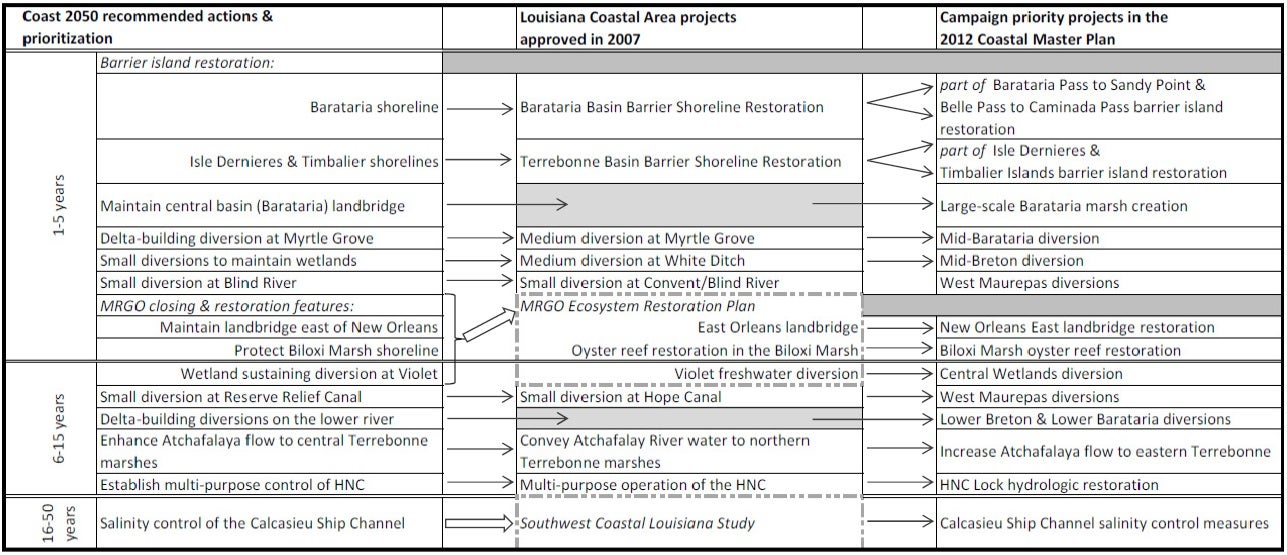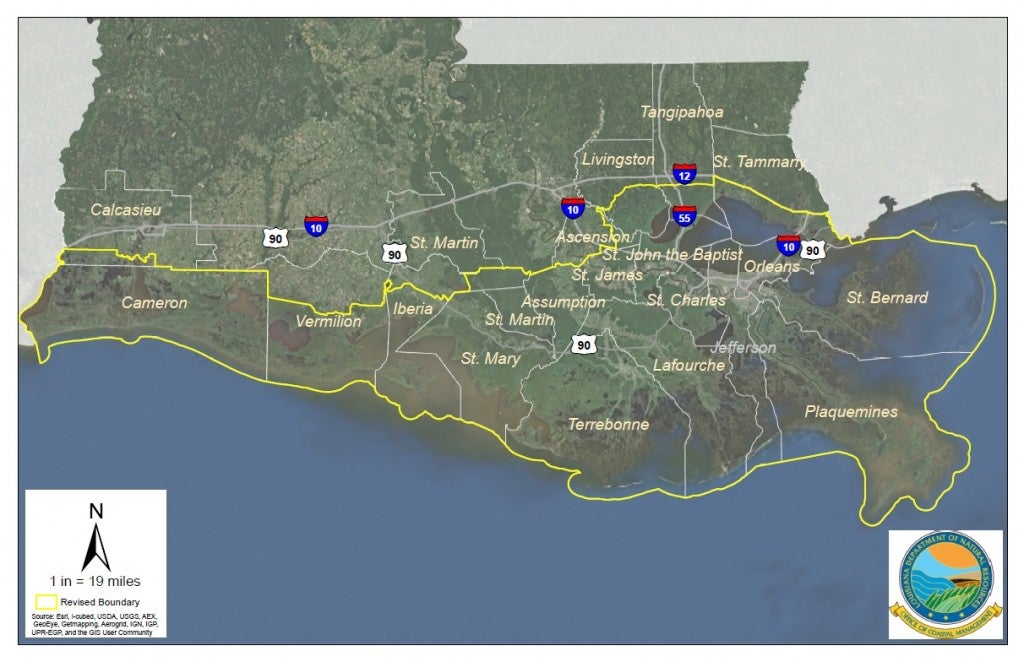Coast 2050’s Lasting Impacts on Coastal Restoration
This post is part of a series on early restoration planning in Louisiana. Be sure to check out our previous posts: part one, part two and part three.
Since the early 1990’s, the Coastal Wetlands Planning, Preservation, and Restoration Act (CWPPRA) has been providing a steady funding stream for Louisiana coastal restoration, averaging about $45 million per year. Yet despite this funding commitment, at the time, there was still a void in actionable, systematic restoration planning for coastal Louisiana.
Seeing a need, the Louisiana State Wetlands Authority and the CWPRRA Task Force collaborated to develop Coast 2050, a strategic plan for creating an enduring and sustainable Louisiana coast. Approved in 1998, the plan was a consensus-based, stakeholder-informed initiative that received explicit support from all 20 coastal parishes.
This comprehensive plan takes a regional perspective on restoration, based on three strategic goals:
- To create and sustain marsh by accumulating sediment and plant matter;
- To maintain habitat diversity by varying salinities and protecting key land forms; and
- To maintain ecosystem connections so there is exchange of energy, plants, and animals.
By focusing on these guiding principles, the participants in this collaborative effort were able to generate a plan that relies on a variety of restoration tools – from shoreline protection and marsh creation to the reintroduction of fresh water and sediment to deteriorating wetlands.
From Coast 2050 to LCA Study
The Louisiana Coastal Area (LCA) Ecosystem Restoration Study was an outgrowth of Coast 2050 that took the plan’s restoration concepts and strategies and formulated them into more specific project ideas that could be analyzed and studied.
The overall goal of the LCA study was to reverse the trend of coastal ecosystem degradation, with a specific focus on using restoration strategies that would reintroduce historic flows of river water, nutrients and sediment to the coastal wetlands.
The results of the study, which were finalized and published in 2004, identify 15 projects categorized as ‘critical near-term features.’ This means that the project or action addresses essential ecological needs of coastal Louisiana in areas where delaying action would result in greater future restoration costs and possibly a loss of opportunity for restoration.
Although the approved LCA plan and these 15 critical near-term projects were included in the 2007 Water Resources Development Act, no funds were actually appropriated for this work. Meaning that while the U.S. Congress authorized the Army Corps of Engineers to work on these coastal restoration projects, they did not give them any money to do it.
Coast 2050’s Lasting Impacts
Many of the recommended actions and priorities advanced in Coast 2050 have had a lasting imprint on restoration planning in Louisiana, by setting the stage for project ideas that became a part of the LCA Ecosystem Restoration Study and, eventually, the 2012 Coastal Master Plan.

Coast 2050, Louisiana Coastal Area and 2012 Coastal Master Plan projects (click to enlarge)
Despite the lack of funds and forward momentum in implementing the LCA plan over the past decade, these projects and ideas – that will have a great benefit to the ecosystem and are strongly rooted in science – are finally advancing through the state’s Coastal Master Plan and oil spill-related funding.
Many of these are priority projects for the Restore the Mississippi River Delta Coalition, because they are based in sound science, have been planned and studied for a long time and are key to comprehensive and sustainable coastal restoration. While implementation of some of these projects has been slow, we expect that many of them will see greater progress now that the results of the basin-wide modeling effort have been announced, CPRA’s recent recommendation to move forward the Mid Barataria and Mid Breton sediment diversions into engineering and design, and as more funding becomes available through the pending BP settlement.
By Estelle Robichaux, Restoration Project Analyst, Environmental Defense Fund and Gaby Garcia, Science Intern, Environmental Defense Fund
